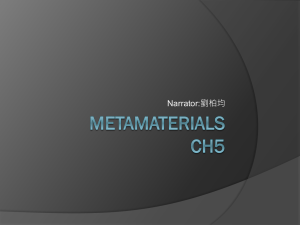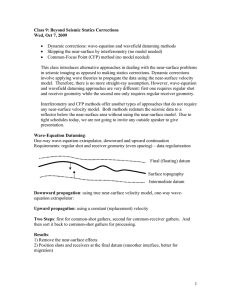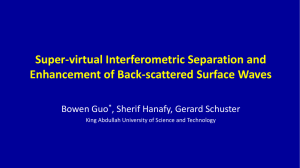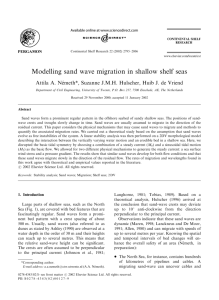Detecting Faults by Migrating Back
advertisement
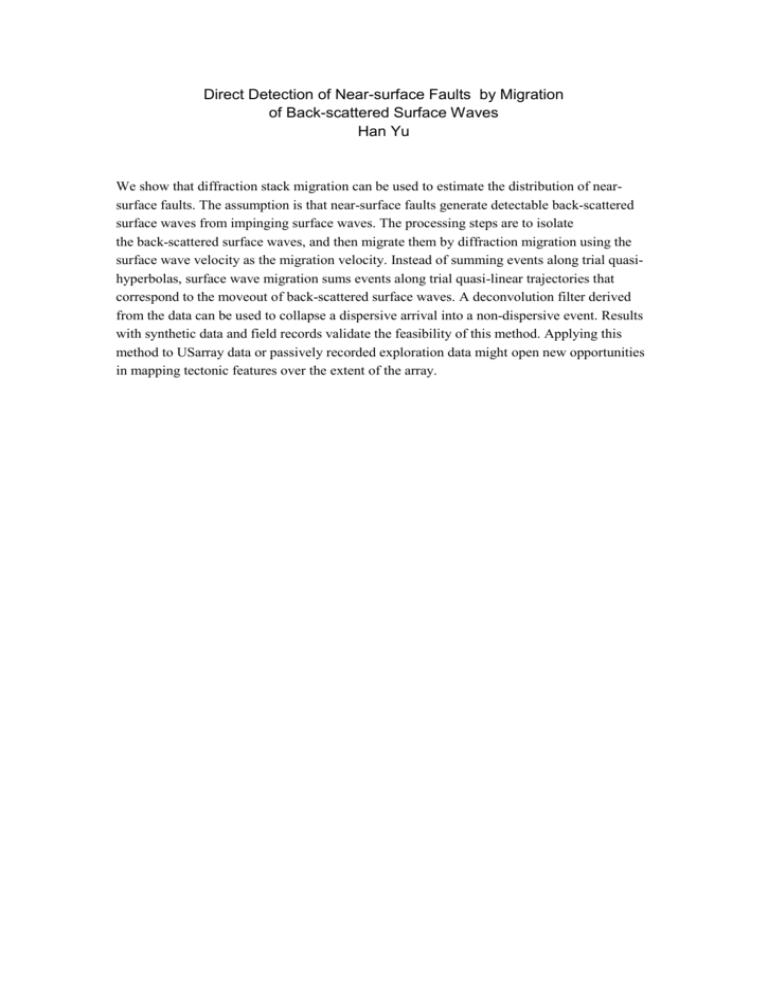
Direct Detection of Near-surface Faults by Migration of Back-scattered Surface Waves Han Yu We show that diffraction stack migration can be used to estimate the distribution of nearsurface faults. The assumption is that near-surface faults generate detectable back-scattered surface waves from impinging surface waves. The processing steps are to isolate the back-scattered surface waves, and then migrate them by diffraction migration using the surface wave velocity as the migration velocity. Instead of summing events along trial quasihyperbolas, surface wave migration sums events along trial quasi-linear trajectories that correspond to the moveout of back-scattered surface waves. A deconvolution filter derived from the data can be used to collapse a dispersive arrival into a non-dispersive event. Results with synthetic data and field records validate the feasibility of this method. Applying this method to USarray data or passively recorded exploration data might open new opportunities in mapping tectonic features over the extent of the array.


